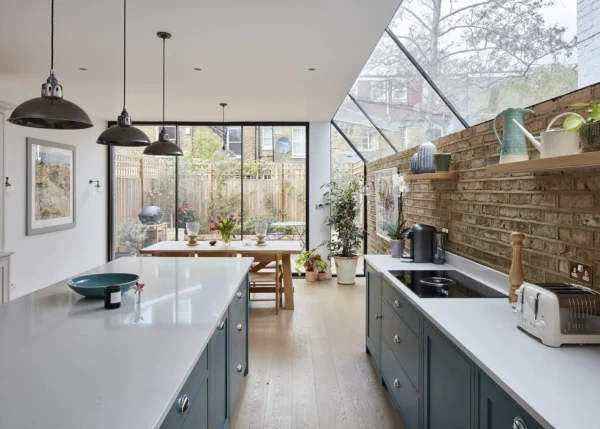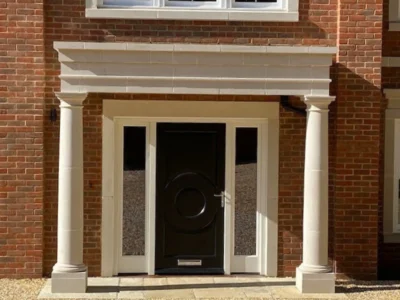Self-Build Mortgages Explained
One of the consequences resulting from the 2007/8 housing market crash has been a tightening of available credit for businesses and consumers alike.
However, although there have been some changes made to individual products themselves, specialist mortgages have continued to underpin the majority of the nation’s self-build activity.
Happily, the number of lenders operating in the sector is increasing, particularly when it comes to building societies. In terms of products, there is a division between what is known as a guaranteed advance stage payment mortgage (GASPM) and an arrears stage payment mortgage (ASPM).
What do lenders look for?
Looking at things from the lender’s perspective helps us to understand how self-build mortgage products are crafted and how the lender will need to protect themselves from any perceived performance risks.
First must be the question of affordability, and a demonstration that you, as the applicant, have sufficient income to be able to service the ultimate loan.
This is usually expressed as a multiple of your monthly earnings (or your combined earnings, for joint applications).
Second is a mechanism to ensure that the lender has sufficient security at any one point in time against the monies that they may have advanced, which is normally expressed in terms of an on-site valuation.
Some lenders – not all – with current self-build mortgage products will be happy to lend on the initial land purchase.
And then there is the question what ‘land’ actually is. In this context, ‘land’ must come with some form of current planning consent, be it outline planning permission (OPP) or detailed planning permission (DPP), with a sufficient unexpired term left to enable a lead-in time before your construction phase.
Option 1: Arrears stage payment self-build mortgages
With an arrears stage payment mortgage, the lender will need to be reassured that any advanced funds are below a previously agreed and published percentage threshold.
This is typically between 60-85% of each stage, which may differ for both the initial land purchase and the subsequent build costs.
After completing the application process you will ultimately be given a mortgage offer that will have a certain lifespan during which you will be able to proceed.
By the time you have reached this ‘offer’ stage you will have had to pay some processing fees, so most people will accept the offer and make their first draw down.
This may be on the land or, if you are already the outright owner of your plot, it may be on the first stage of construction works.
The offer – dependent upon your requirements and choice of lender – will typically be broken down into between three and five stages, although some lenders may be more flexible.
These stages are likely to be: foundations (which may also include the ground floor slab); wall plate (when your external and loadbearing walls are complete); wind and watertight (when the roof is on and the windows and doors are installed); first fix (when the ‘hidden’ electrical, plumbing and heating installations are complete); and finally, completion (when you want to move in).
So, using stage one (post-land acquisition) as an example, the lender may have agreed to release a tranche of money once the foundations, services and slab are complete.
Let’s say that it has cost you £25,000 to install your services, drainage, foundations and ground floor slab; upon completion of this stage, you then make your application to the lender for a draw down.
The lender then responds to your request by sending a surveyor to site within a previously agreed timescale to value the new works.
The surveyor, who is appointed by the lender and not you, will report back to the lender that in his/her opinion the value of the works now completed (post plot purchase) are indeed £25,000.
The lender will then release to you, again within a previously agreed timetable, the agreed percentage element (60-85%) of that valuation. And so the process goes on until completion with each subsequent draw down.
Considerations for arrears stage payment mortgages
Issues to be aware of include the length of time it can take between valuation and physically receiving your cash, which, given that you will need to make payments to your suppliers and builders, is an important consideration.
A second issue, which is perhaps not so obvious, is the reality that the surveyor’s valuation might not be the same as the physical cost of the works to you.
This can often be a complication where foundation work, for example, has cost considerably more than anticipated due to the prevailing soil conditions on site and where the extra amount spent has not been reflected in the valuation.
Using the above example, the surveyor may conclude that the uplift in valuation is actually only £20,000 against your spend of £25,000, which could then put pressure on your cash flow.
These types of mortgage are therefore particularly suited to self-builders who also have some other form of liquidity to compensate for any cash flow imbalance.
Option 2: Guaranteed advance stage payment self-build mortgages
With a guaranteed advance stage payment mortgage, the risks associated with subjective valuations are removed, because there is a greater degree of vigilance in costing the project prior to starting the works.
For those who have less liquidity, and who will be more reliant on knowing exactly what sums they are to receive and when, this is an ideal alternative.
Invented by BuildStore, GASPMs are also designed to work with off-site construction.
So, if you have chosen to use products that are going to be manufactured for you in a factory prior to assembly on site (a timber frame building kit, for example), this mortgage product will enable you to make a deposit payment to your manufacturer, which might be an express condition of their service.
Essentially the extra diligence comes through an in-depth analysis of your costings and then a detailed cash flow summary through an identification of who will need to be paid and when.
The lender will also be advancing payments based upon a perceived set of stage valuations at typical percentage rates of between 60 and 80%.
However, because each tranche will be established (and guaranteed) to meet your cash flow requirements, the lender might rightly consider that at certain stages of the build, their exposure is out of kilter with the physical progress and value of the works on site.
This is known as the funding gap and it is this gap (the lender’s extra exposure) for which the lender will require insurance protection in the form of a single payment indemnity. It means that the lender is protected and you are in receipt of the funds that you need and, crucially, just at the right time.
Other sources of finance for self-build projects
There are a few alternative ways to finance a self-build project, including more straightforward bank loans, equity release schemes or some form of bridging finance product.
When I built my house 17 years ago, which was before the advent of today’s self-build mortgage products, I was able to arrange a loan to purchase my plot. Following this, I sold my house and moved the family into a mobile home on site, and then repaid the plot loan with the equity proceeds.
When it came to building the house several months later I was able to secure a bank loan for the construction phase, which was then ultimately converted into a standard house mortgage upon completion.
There are certain lenders that specialise in equity release schemes and many others that can provide bridging finance. Their terms will vary widely and so the best port of call would be a specialist broker, such as BuildStore, which can give up-to-the-minute advice on what products are currently available.



































































































 Login/register to save Article for later
Login/register to save Article for later













Comments are closed.